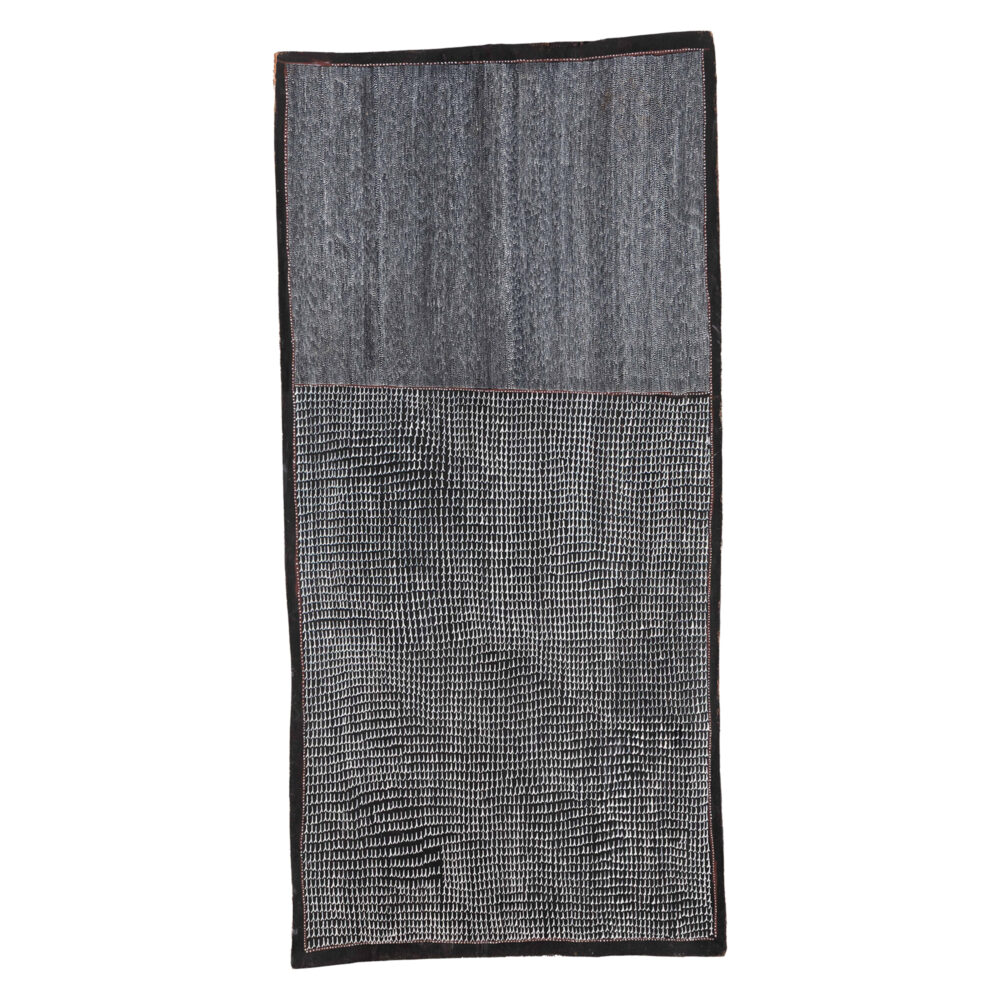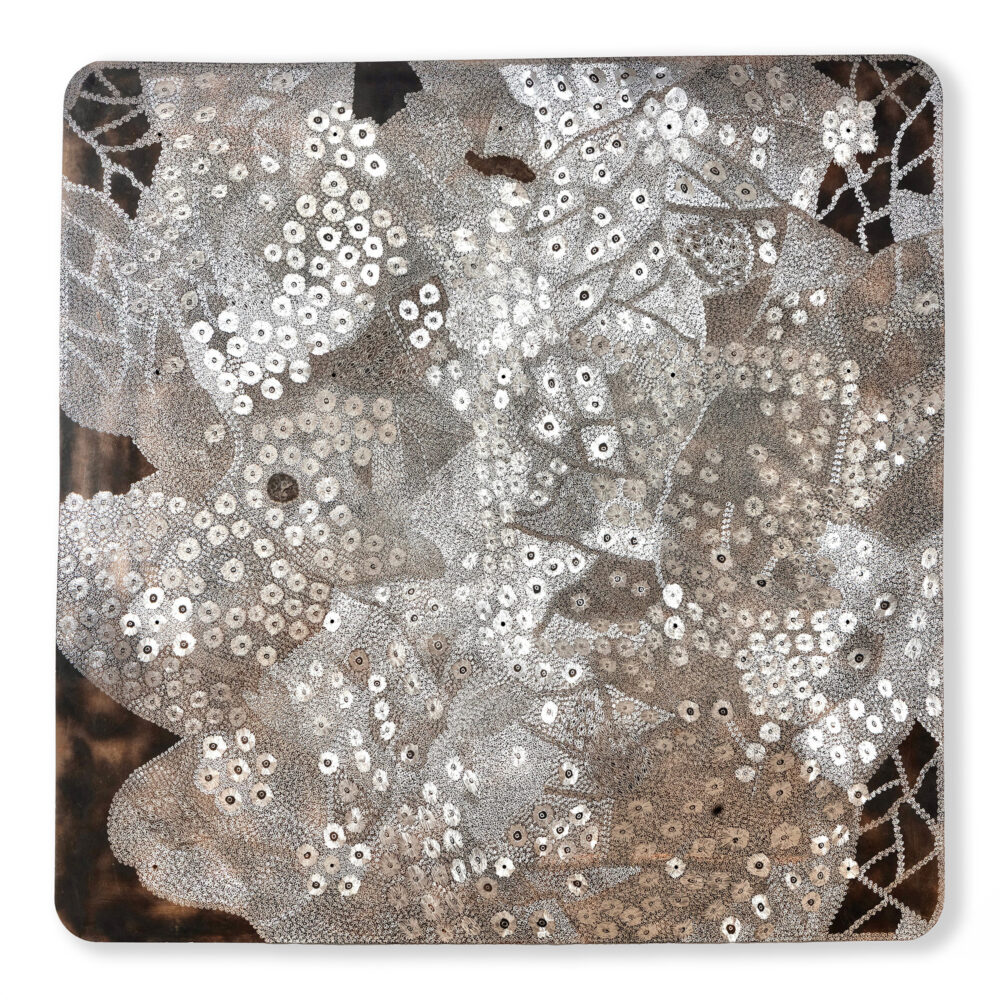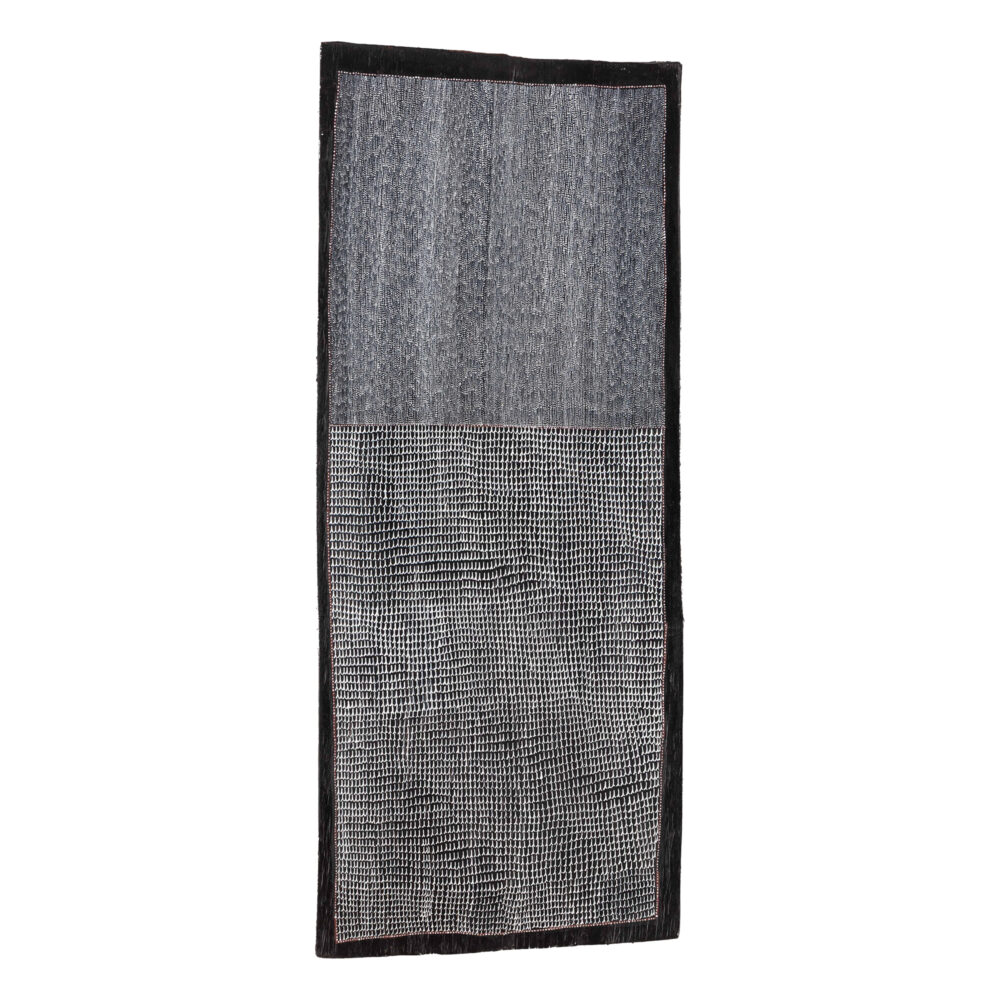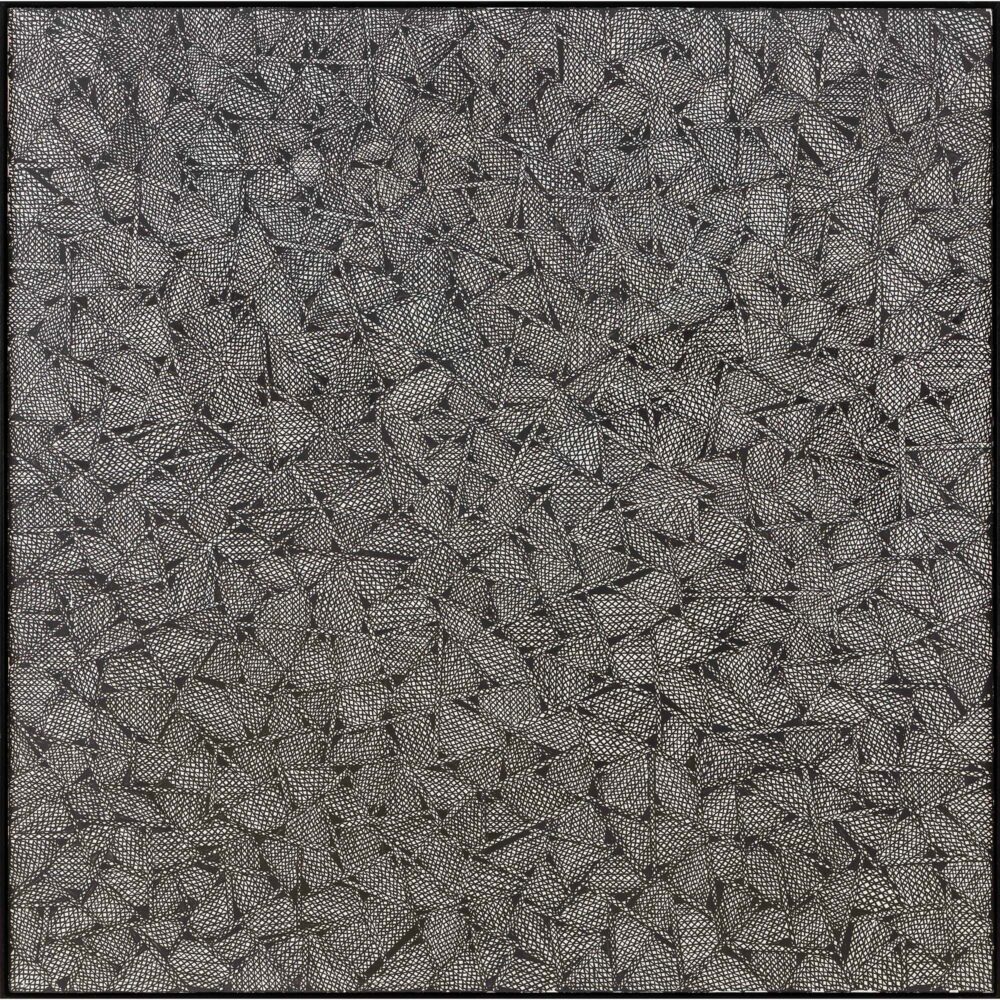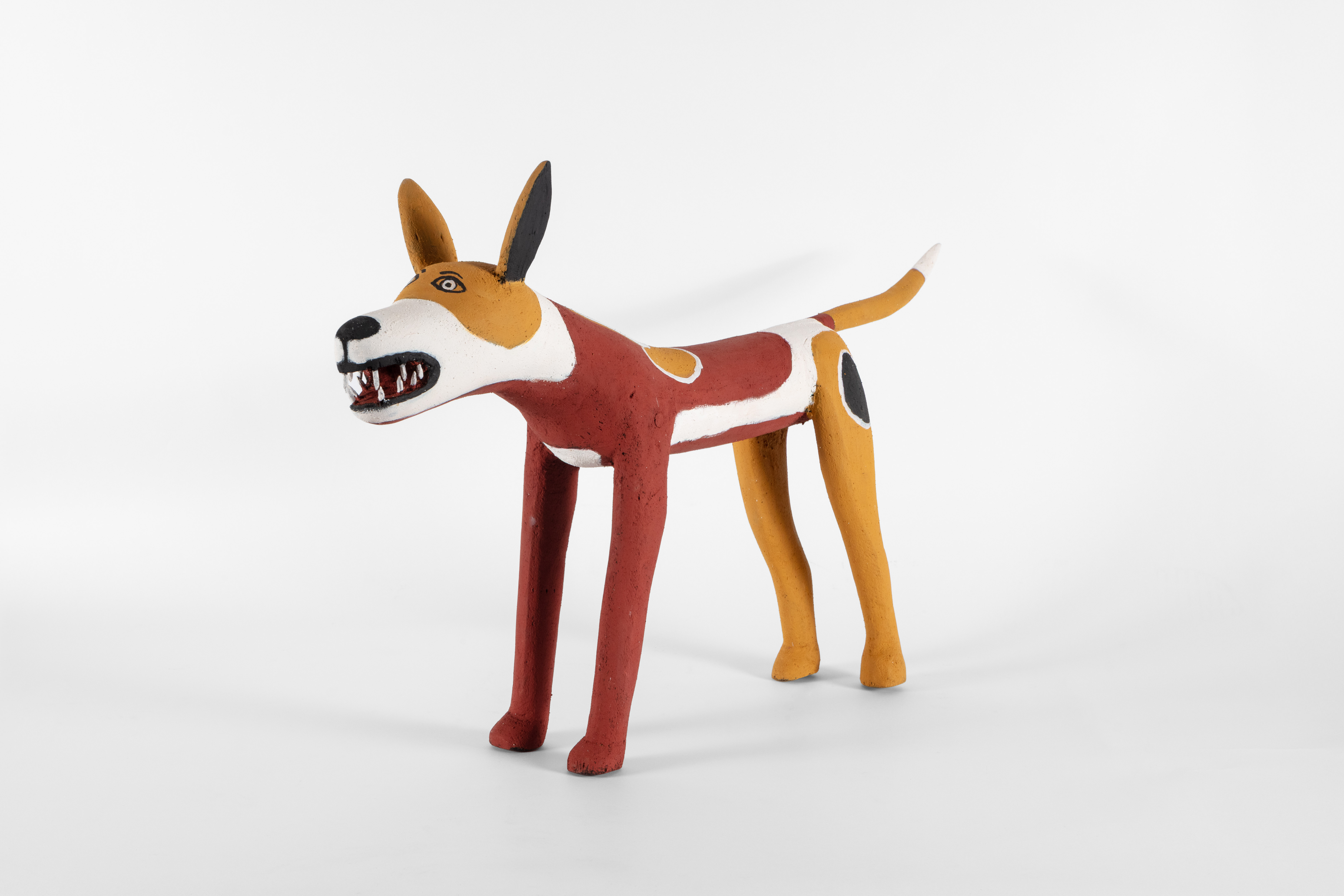
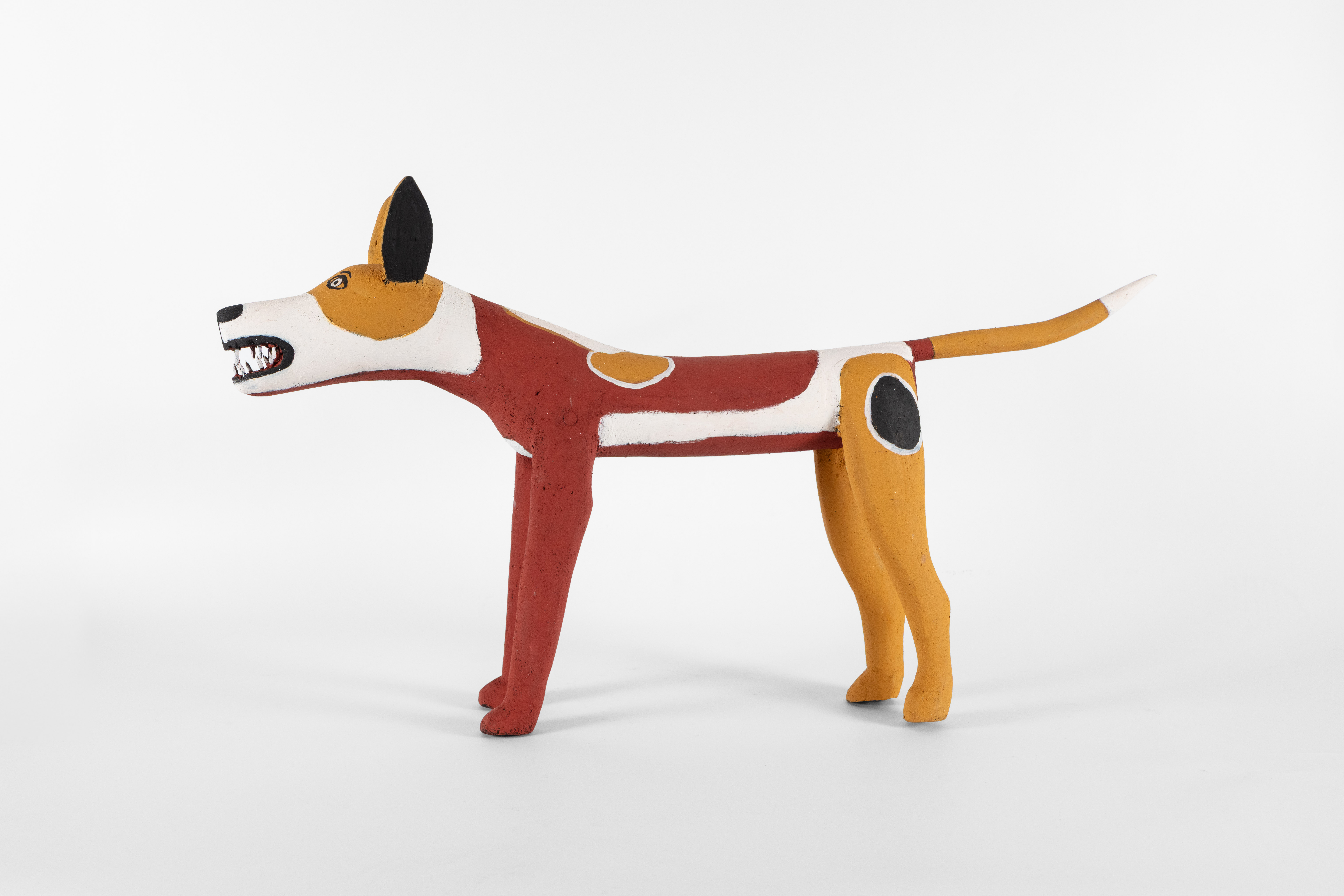
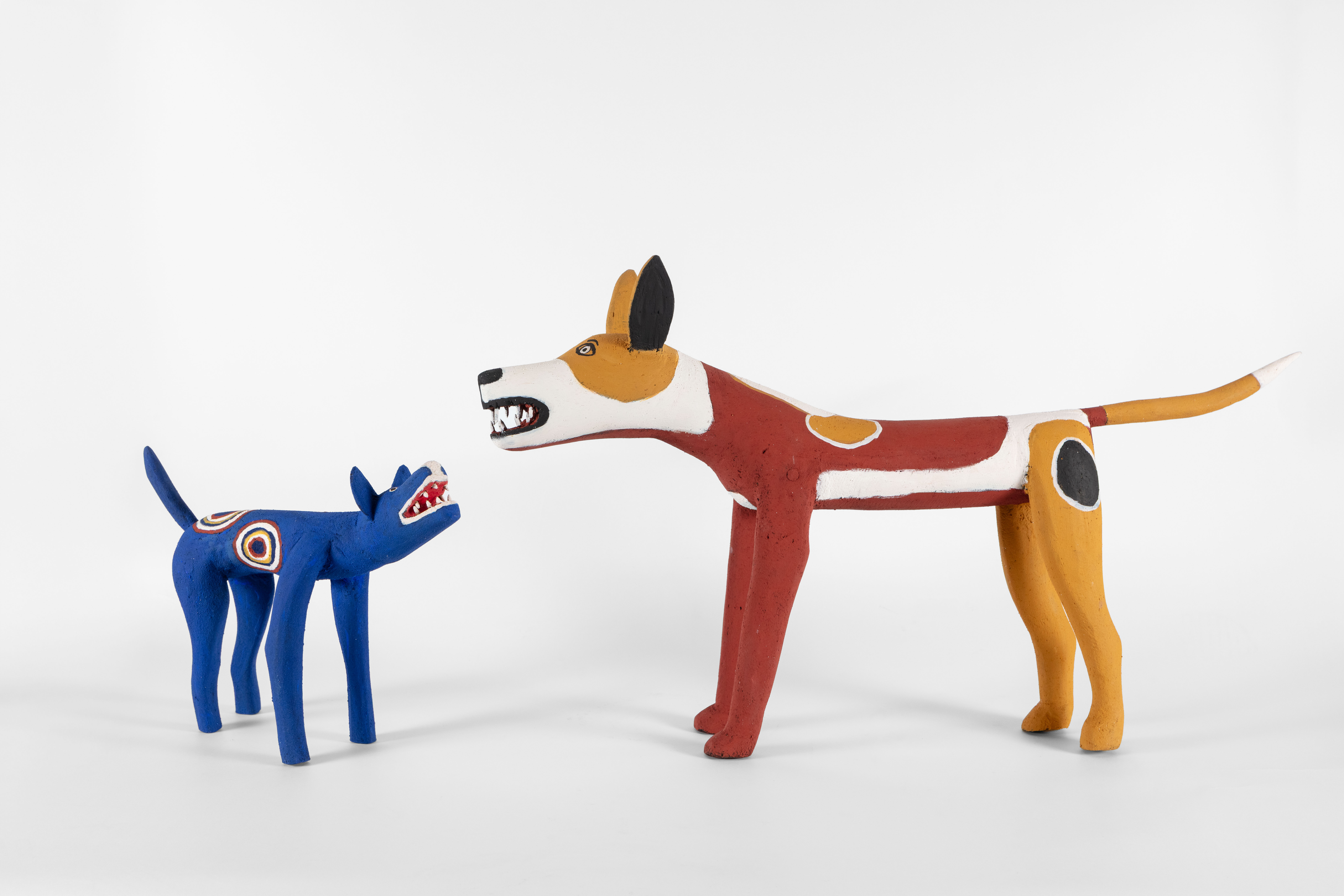
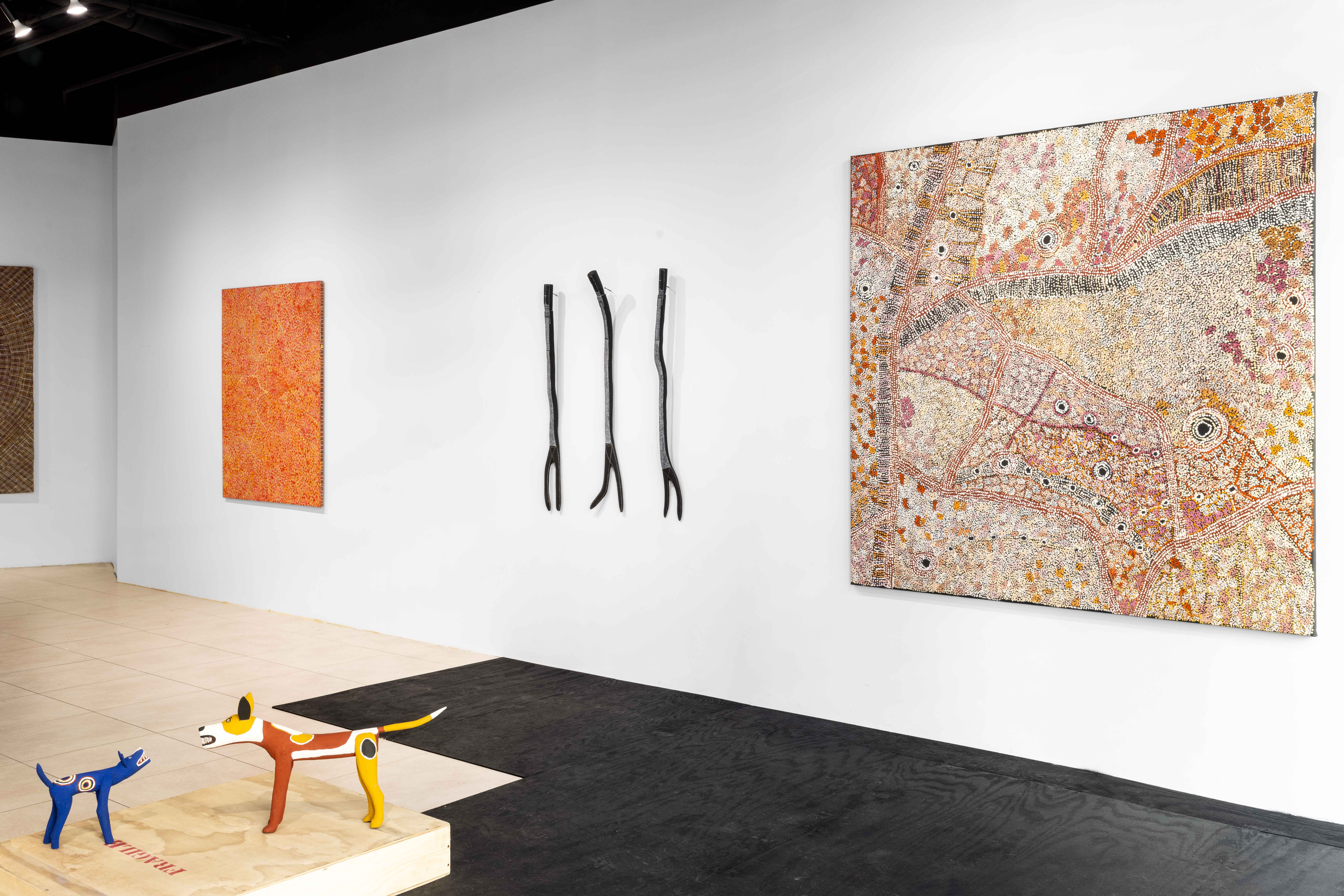
Garry Namponan is a leading Wik sculptor from Aurukun, Far North Queensland, whose works continue the celebrated Aurukun carving tradition. His practice is grounded in ancestral narratives, often depicting totemic beings connected to the Wik and Kugu peoples’ ceremonial life. Namponan’s works are typically carved from local Milkwood, then finished with natural ochres, retaining a strong link to traditional materials and visual language. This sculpture represents Ku’, the Ancestral Being associated with the Apalech ceremonial clan, whose story place is located at Eeremangk near the mouth of the Knox River in southern Wik and Kugu country. According to oral histories, Ku’ travelled from distant Western Australia to Cape York Peninsula, resting at Knox River after a long pursuit of a kangaroo. It was here that Ku’ gave language to the region. Each Ku’ story place has its own name, colours, and character, and its songs and dances remain part of ceremonial life today.
Aurukun’s ritual sculpture tradition has been documented since at least 1888. Ursula McConnel’s significant early 20th-century recordings and collections now reside in the South Australian Museum. In the mission era, support for certain ceremonial practices, combined with the introduction of steel tools, allowed for new levels of technical refinement in carving – developments reflected in Lex and Garry Namponan’s complex and finely finished sculptures.
Major exhibitions featuring Aurukun sculpture include Tarnanthi: Festival of Contemporary Aboriginal & Torres Strait Islander Art (Art Gallery of South Australia, various years), Story Place: Indigenous Art of Cape York and the Rainforest (Queensland Art Gallery | Gallery of Modern Art, 2003–2004), and Aurukun Carvers: Camp Dogs and Other Creatures (Cairns Regional Gallery, 2011).
Ku’ | Camp Dog, (91-25), 2025
PROVENANCE
Wik & Kugu Arts, Queensland, Australia
$8,000 USD
Garry Namponan is a leading Wik sculptor from Aurukun, Far North Queensland, whose works continue the celebrated Aurukun carving tradition. His practice is grounded in ancestral narratives, often depicting totemic beings connected to the Wik and Kugu peoples’ ceremonial life. Namponan’s works are typically carved from local Milkwood, then finished with natural ochres, retaining a strong link to traditional materials and visual language. This sculpture represents Ku’, the Ancestral Being associated with the Apalech ceremonial clan, whose story place is located at Eeremangk near the mouth of the Knox River in southern Wik and Kugu country. According to oral histories, Ku’ travelled from distant Western Australia to Cape York Peninsula, resting at Knox River after a long pursuit of a kangaroo. It was here that Ku’ gave language to the region. Each Ku’ story place has its own name, colours, and character, and its songs and dances remain part of ceremonial life today.
Aurukun’s ritual sculpture tradition has been documented since at least 1888. Ursula McConnel’s significant early 20th-century recordings and collections now reside in the South Australian Museum. In the mission era, support for certain ceremonial practices, combined with the introduction of steel tools, allowed for new levels of technical refinement in carving – developments reflected in Lex and Garry Namponan’s complex and finely finished sculptures.
Major exhibitions featuring Aurukun sculpture include Tarnanthi: Festival of Contemporary Aboriginal & Torres Strait Islander Art (Art Gallery of South Australia, various years), Story Place: Indigenous Art of Cape York and the Rainforest (Queensland Art Gallery | Gallery of Modern Art, 2003–2004), and Aurukun Carvers: Camp Dogs and Other Creatures (Cairns Regional Gallery, 2011).


